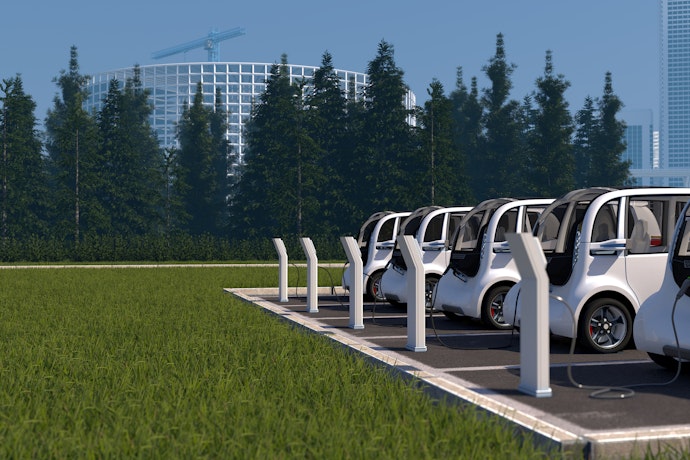How smart video fuels smart business
Learn how innovations in video powered by AI and machine learning are helping to reshape safety and efficiency for businesses.
Read more
Though we don’t really have a crystal ball to see the future, we do like to keep tabs on trends to see where the future of the fleet management industry is heading. As technology continues to improve, some trends almost seem like science fiction now, but soon will become mainstream.
After all, according to author Michio Kaku, “… every Christmas, your new computer games are almost twice as powerful as those from the previous year. Furthermore, as the years pass, this incremental gain becomes monumental … Today, your cell phone has more computer power than all of NASA back in 1969, when it placed two astronauts on the moon.”
In other words, anyone who owns a smartphone carries in their pocket a computer more powerful than anything the most advanced research and scientific agencies could even dream of just a few decades ago – something that might have sounded like science fiction even to NASA in the ‘60s.
With that in mind, here are three trends you might see in fleet management in both the near and far future:
Augmented reality: Augmented reality, a view of the real world that is supplemented by computer-generated sensory input like video, may soon be coming to fleets near you. ABI Research says that AR technology “will redefine the driving and ownership experience” of vehicles by giving drivers helpful information like signaling when there are pedestrians or obstacles in the roadway, creating safer roadways.
There could also be features like using the windshield like a screen to display obstacle detection or flash traffic alerts. A speedometer could be projected onto the windshield, eliminating a driver having to look down to see his or her speed, and color coding could indicate whether a driver is in the “green,” “yellow,” or “red” zone, making it easier for a driver to know when to slow down.
Augmented reality might integrate with a telematics program, too. A fleet management system with telematics capabilities could project the directions onto the windshields with arrows, showing a driver when/where to turn..
Fleet trucks that drive themselves may not be that far away. In this scenario, the “driver” doesn’t need to focus on the road, but instead is a passenger and can be reading up on job orders, updating job order notes, sending invoices, etc. A telematics program can work with the autonomous car to keep an eye out for traffic obstructions and road issues in real time, and send messages to the vehicle to take a different route or quick detour.
This is still a fairly long way off, of course. First, we need to perfect semi-autonomous vehicles: Drivers still control the vehicle, but the vehicle provides extra measures like braking if the vehicle gets too close to an object, or parallel parking assistance. (Some consumer cars already offer these types of features.) Once these features are perfected and we move on to fully autonomous vehicles, the hope is that these features will eliminate issues like drowsy or distracted drivers.
Our vehicles also may start to interact with us (not vice versa, where we tell them what to do): Just like a Nest thermostat learns homeowners’ behavioral patterns and temperature preferences based on where it’s installed, a vehicle may someday learn driver patterns and schedules and operate accordingly.
According to a Financial Times article, in five to seven years, industry executives estimate that telematics will be an integral part of all vehicle fleets. More fleet businesses will realize the benefits of using telematics once they understand the mountain of data that comes from that kind of interconnectivity. For example, instead of a business needing to manually keep track of a vehicle’s engine hours, the telematics program will do it automatically, and also provide information on how those hours affect a maintenance cycle and when the vehicle needs to be serviced.
This is part of a larger trend – “the connected vehicle.” Someday, we may see autonomous cars combined with telematics that allow vehicles to talk to each other, allowing a whole new level of on-the-fly route changes or updates on location. The vehicles might also contact repair shops when a maintenance alert is triggered and set up their own repair appointments, or, when fuel is running low, automatically drive to the nearest fuel station that has the lowest fuel cost within a certain radius.




Find out how our platform gives you the visibility you need to get more done.
Learn how innovations in video powered by AI and machine learning are helping to reshape safety and efficiency for businesses.
Read moreAre you ready for vehicle tracking? Go through our checklist to learn the signs you’re ready to add fleet tracking to...
Read moreLearn how AI, machine learning, and predictive analytics is improving fleet accurating and cutting costs.
Read moreLearn how telematics can lead to operational improvements.
Read more